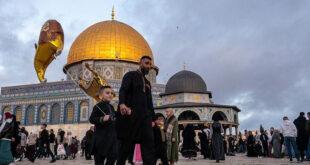As of September, Unesco confirmed damage to 69 cultural heritage sites since the war started on 7 October 2023.
These include 10 religious sites, 43 buildings of historical and artistic interest, two repositories of movable cultural property, six monuments, one museum, and seven archaeological sites.
Unesco told Middle East Eye that its preliminary assessment using satellite imagery shows that out of these sites, 29 per cent (20 sites) appear destroyed, 20 per cent (14 sites) severely damaged, and 51 per cent (35 sites) moderately damaged.
The UN agency said that it has only been able to conduct remote assessments of the damage due to the war. That could mean the extent of the damage on the ground may be more severe.
Earlier this year, reports surfaced confirming that Israel had also looted Palestinian artefacts in Gaza.
Researchers at Birzeit University in the occupied West Bank accused Israeli forces of looting more than 3,000 artefacts from Gaza’s Al-Israa University earlier this year before demolishing the site to cover up the theft.
Today, Israel’s military campaign has been so catastrophic that Gaza’s urban landscape has become nearly unrecognisable.
Gaza, situated between Egypt and the Levant, has historically served as a crossroads for empires, with each leaving its mark.
‘We will tell our children and future generations all that they have done to us’
– Omar Abd Al Hakem Hamad, Palestinian writer in Gaza
The cultural remnants of ancient civilizations, such as those left by Egyptians, Assyrians, Romans, Christians, and Muslims, are either destroyed, damaged, or at risk.
“This cultural erasure is a deliberate part of the Zionist project, aiming to disconnect the Palestinians from their historical and cultural roots while promoting a narrative that denies Palestinian history altogether,” said Dr Yakoob Ahmed, an Ottoman historian, speaking to MEE.
He warned that Israel is carrying out “cultural genocide,” erasing the past and the potential for future generations to maintain their heritage.
Omar Abd Al Hakem Hamad, a Palestinian writer who was forcefully expelled from his home in Beit Hanoun in northern Gaza believes Israel’s aim is to erase all Palestinian connections to the land.
“Israel deliberately targets and destroys all landmarks related to the Palestinian people’s rightful claim to Palestine, attempting to erase and obliterate Palestinian identity,” said Hamad speaking to MEE from Gaza.
“Israel employs all possible means, both strong and subtle, to erase anything connected to the spirit of the Palestinian people and to undermine any argument or means for us to defend ourselves,” he added.
Omar has lost his business and seen countless family members and friends killed by Israel’s year-long war but is adamant that Palestinians will rebuild what Israel is seeking to erase.
“We will tell our children and future generations all that they have done to us. A cultured, vengeful Palestinian generation will rise, holding a pen in their left hand to expose the occupation and a rifle in their right hand to fight and take revenge against this vile Zionist enemy,” he told MEE.
What follows is a summary of some of the historic sites that have been destroyed or damaged in the last year.
Mosques
The Israeli army has razed 814 of Gaza’s 1,245 mosques and severely damaged 148 since October 2023, Gaza’s ministry of religious affairs said earlier this month.
Mosques destroyed includes the Othman bin Qashqar Mosque in Gaza City’s Zeitoun neighbourhood.
Built in 1220 at the site where Prophet Muhammad’s great-grandfather is believed to have been buried, the site was destroyed in an Israeli air strike on 7 December.
The Great Omari Mosque, a cherished landmark in Gaza and one of the oldest mosques in the region, was largely destroyed by Israeli bombardment on 8 December, 2023.
The Great Omari Mosque minaret in the Old City of Gaza City is all that is left of the mosque (AFP)
Originally built in the early seventh century, the mosque was named after Umar ibn al-Khattab, the second caliph of Islam and a successor to the Prophet Muhammad.
The mosque’s elegant design featured white stone, pointed arches, and a tall octagonal minaret encircled by a carved wooden balcony, topped with a crescent.
Early during the war, Israeli forces targeted the Sayed al-Hashim Mosque, which featured an open courtyard surrounded by four canopies.
Inside the western section of the mosque was the tomb of Hashim bin Abdul Manaf, the grandfather of the Prophet Muhammad, who passed away in Gaza during a summer journey.
Palestinians are pictured at the Sayed al-Hashim Mosque, in Gaza city in June 2014, during the Muslim fasting month of Ramadan (AFP)
Originally built by the Mamluks, the mosque was restored in 1850 by the Ottoman sultan, Sultan Abdumecid I.
Under the 1954 Hague Convention for the Protection of Cultural Property in the Event of Armed Conflict, which Israel ratified, nations are committed to safeguarding cultural sites during conflicts.
Israel has largely disregarded this commitment.
Churches
The Gaza Strips ancient churches have not escaped the fallout of Israel’s military campaign and since the conflict began, all three of Gaza’s churches have been struck and damaged by Israel.
Dating back to the fifth-century, the Greek Orthodox Church of Saint Porphyrius is one of the oldest places of worship in Gaza and considered to be one of the oldest in all of Christendom.
It dates back to around 407CE and was converted into a mosque in the 7th century before being restored to its earlier status by crusaders in the 12th century.
This picture taken on 5 January 2024 shows Gaza City’s Greek Orthodox Church of Saint Porphyrius, which was damaged by Israeli bombardment (AFP)
The church was damaged during a deadly Israeli air strike on the adjacent 141-year-old Ahli Baptist Hospital, the oldest hospital in the strip.
At least 18 Christian Palestinians were killed and dozens wounded following the attack on 19 October 2023.
The Greek Orthodox Patriarchate of Jerusalem said the targeting of the church “constitutes a war crime”.
Its neighbouring Ottoman-style Katib al-Wilaya Mosque, built in the 15th century, also sustained damage in the same attack.
Saint Porphyrius was targeted again on 30 July of this year, in an attack described as a “crime against religions,” by Ismail Thawabteh, director of Gaza’s government media office.
Following the 2024 attack, the World Council of Churches (WCC), of which the Church of Saint Porphyrius is a member, issued a statement condemning the attack.
There are around 1,000 Christians in Gaza, most of them Greek Orthodox, but the church has been a vital sanctuary for both Christians and Muslims during Israeli assaults on on Gaza.
For decades, Palestinian authorities had worked to preserve the site and restore its ancient Byzantine mosaics, which include depictions of animals, hunting scenes and palm trees.
Following the a three-year restoration project, with the help of French organisation, Premiere Urgence Internationale, and the British Council, the 5th-century Byzantine church was opened to the public in 2022.
At a ceremony marking the site’s reopening, Archbishop Alexios of Tiberias, the most senior Christian cleric in Gaza, noted that “monasticism began in the Gaza Strip in the year 280″.
The Monastery of Saint Hilarion, which dates back to the 4th century is one of the most well-preserved monasteries in the Middle East, as well as one of the oldest.
In January this year, Al Jazeera reported that it too had been damaged in Israel’s assault on the Gaza Strip.
“Our organisation also reminds that one of the Palestinian World Heritage sites, Saint Hilarion Monastery (Tell Umm Amer), is located in the Gaza strip,” it said.
“Unesco deplores the damages and destructions of cultural heritage sites as well as its consequences on civilian and economic life,” it added.
Other sites in danger
Other heritage sites impacted by Israel’s military campaign include Ard-al-Moharbeen, also known as the “Roman Necropolis”.
Its ruins were uncovered in 2023 by a team of Palestinian and French archaeologists after construction workers stumbled upon tombs at the site while building homes.
At least 134 tombs, believed to date from 200BCE to 200CE, were uncovered in a Roman necropolis, many containing intact skeletons.
Amongst the finds were two ornately decorated lead sarcophagi, featuring grape harvest motifs and the other adorned with dolphin imagery.
According to Unesco, the site is listed as damaged.
However, there are few details about what may have been damaged at the site and whether the Israeli army has looted the archaeological site.
Israel has not allowed outside experts to enter and it is too dangerous for Palestinians archaeologists to survey the site.
Towards the end of 2023 video footage shared online shows Gaza’s historic Hamam al-Sammara (“Bath of the Samaritans”) destroyed after heavy Israeli bombing.
The Samaritans’ bath, is around 1,000 years old and was renovated several times, most recently by the Palestinian Authority in the 1990s.
Gaza City once had about six bathhouses, but many were dismantled to accommodate the city’s rapid expansion over the past century, particularly after the 1948 Nakba, or catastrophe, which refers to the ethnic cleansing of Palestine by Zionist militias to make way for the creation of Israel
In recent years, the surviving bathhouses have seen increased use due to the ongoing conflict, as places of shelter.
A Palestinian cleans artefacts at the family-run al-Qarara Cultural Museum, 19 October 2020 (AFP)
The al-Qarara Museum, also known as the Khan Younis Museum, which was established in 2016 by Mohamed and Najla Abu Lahia, has also been confirmed to have been destroyed by Israeli army fire.
The museum featured approximately 3,000 artefacts stretching from the Canaanite period through to the various Bronze Age civilizations that inhabited Gaza and the Levant.
All that is left of its collections are fragments of pottery and shattered glass after it was hit by an Israeli strike in October.
Post Disclaimer | Support Us
Support Us
The sailanmuslim.com web site entirely supported by individual donors and well wishers. If you regularly visit this site and wish to show your appreciation, or if you wish to see further development of sailanmuslim.com, please donate us
IMPORTANT : All content hosted on sailanmuslim.com is solely for non-commercial purposes and with the permission of original copyright holders. Any other use of the hosted content, such as for financial gain, requires express approval from the copyright owners.
 Sri lanka Muslims Web Portal Sri Lanka Muslims News Center
Sri lanka Muslims Web Portal Sri Lanka Muslims News Center








 Donate
Donate


